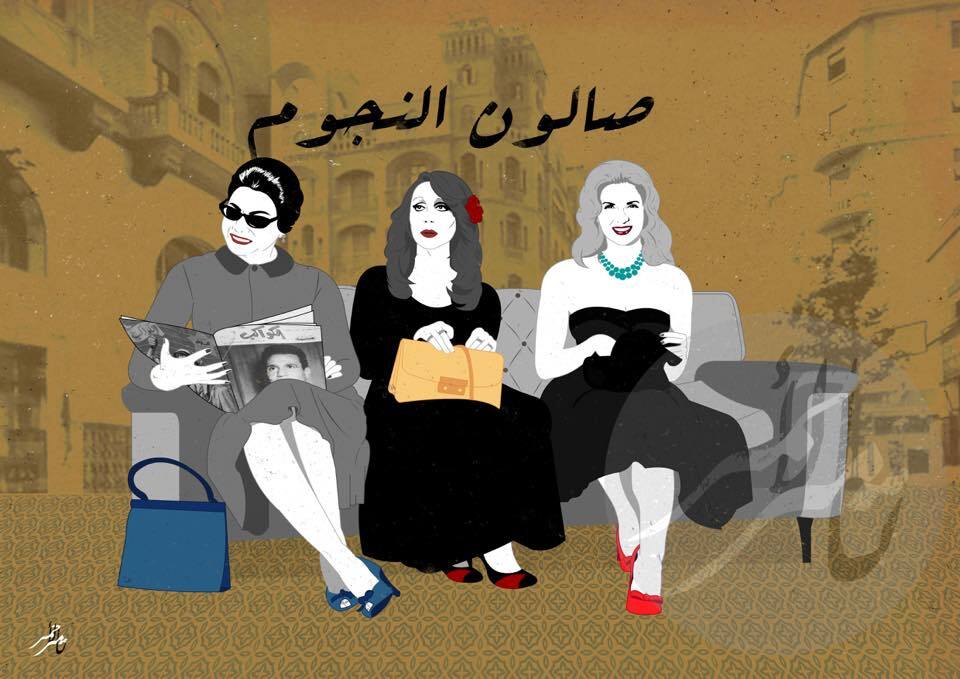History & Heritage
9.10.2021
Tamer al Ahmar, the Jordanian artist who pays tribute to Arab divas

Tamer al Ahmar, a Jordanian artist, pays tribute to musical icons in colorful visuals inspired by the pop art style.
From the 1920s to the 1940s, the Arab world experienced a veritable cultural and political renaissance, driven by the ideals of pan-Arabism and the rise of Egyptian cinema, whose musicals still inspire generations of young Arabs today. It’s to this period, and to the divas who embodied it, such as the famous Egyptian queen of “tarab” Oum Kalthoum, the Lebanese romantic Fairouz or the sultry Syrian actress Ismahan, that Tamar Al Ahmed, a Jordanian artist pays tribute through pop and offbeat visuals. Working in human resources during the day, he spends his evenings hijacking icons and symbols of Arab culture. A way to honor his heritage in a modern and joyful way, but also to breathe a breath of fresh air and hope for this Arab nostalgia. Interview.
How did you start your journey with art?
I was always the one who is famous for being talented in my family and at school, but I never thought of mastering it in a way that would become my full time job. For some time, I thought of studying art but for some reason I chose to study business administration which was very far from my initial aspirations. However, at college, I was attending the art classes and started to learn the different types of painting: from oil to water colors and so on. Meanwhile, a new magazine for kids was launched in Jordan and at that time I was drawing caricatures and cartoons for my friend who suggested I should apply for it. I did it and got hired by them. From there, I started to explore digital art and that was the first step into my art journey.

How did you get the idea of drawing those Arab divas?
At that time, I was watching a lot of movies black and white movies and old Egyptian musicals. Also, I’m very passionate about Arabic music, fashion, and interior design but as I don’t play music, nor do I sing, I thought I should combine all those passions into visual and digital pieces.
For the asmahan poster, I combined all those elements that I like which are inspired from fashion or arab calligraphy to put her in a new position that she has never been before. I didn’t draw her from a specific image but created a new one, so I put her with the traditional arab guitar, the oud, and behind her the lyrics from her song in arabic font and as I’m passionate with interior design, I always focused on patterns, and tiles.
What is fascinating about those divas?
Despite the fact that I like their music, the beginning of their active years in the 20-40’s were a great time of social and political challenges. Those women became influencers of their time. They managed to challenge all the obstacles that Arab societies put on her to achieve what they wanted to do. I remember my mother telling me that when there was a live broadcast of Oum Kalthoum on the radio, people would stop everything they were doing to listen to her for hours sometimes. Now, we listen to a song for 3 minutes and we get bored from it. I want to highlight them because they inspired the ladies of their time and continue to do so now..
How do you explain the success of your work, in Jordan and abroad?
In Jordan, there was a good reception for my art in the market, because at the time I started my artistic journey, digital art was booming and there were not so many artists doing so. when I came with those pieces related to our arabic culture, people could immediately relate to it. I think it is due to the fact that it represents the arabic culture in a modern and beautiful way which is very much appreciated by arabs living abroad by reminding them of their culture and family. At the same time, I got the attention of international media and people thanks to social media. People started to buy my art and share my images which gave me the opportunity to go to Harvard University for the Arab Annual conference, thanks to a customer who worked there and invited me. For an artist like me, social media removed all the boundaries of the world and gave me this great opportunity to share my work.

What are the main feedbacks you get from them?
They often tell me “You remind us of the beautiful old days”. I do art for myself but I like to influence people positively so when I see that they are ready to pay money to have my paintings at home and watch it, I feel this is what I want to continue to do.
popular


